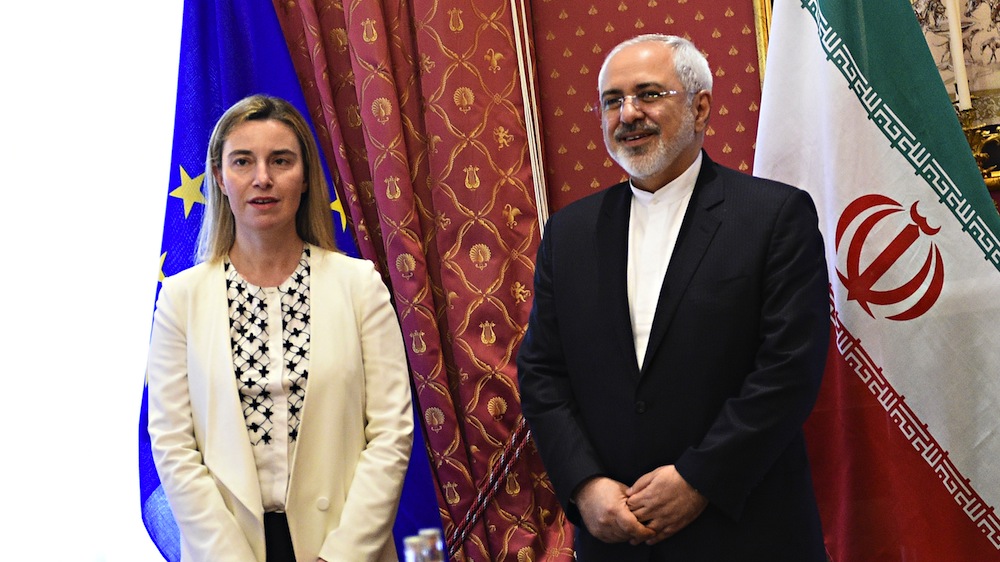On April 2, 2015 in Lausanne EU High Representative for Foreign Affairs Federica Mogherini and Iranian Foreign Minister Mohammad Zarif presented parameters for an agreement about Iran’s nuclear program. What kind of deal is in the making? (1 of 2)
The Lausanne draft agreement has the foundations necessary to work.
First, one of the points agreed upon by all sides is that if there is a deal, the core of the heavy water reactor at Arak will be removed and replaced with a new one built in conjunction with the EU3+3. The plutonium that could be extracted from the heavy water of the new reactor core would not be sufficient to make a nuclear weapon.
There is also the question of centrifuges. Another point on which both sides agreed in the Lausanne is that Iran will reduce the number of its working centrifuges from 19,000 to 5,060 for 10 years, meaning a reduction of 66 percent. All functioning centrifuges will be IR1 centrifuges, the oldest and slowest centrifuges Iran has in its possession.
Even more important than that, according to the new draft agreement more than 99 percent of Iran’s low enriched uranium (LEU) stock will be removed or neutralized for 15 years. This is a larger quantity than was addressed in the 2009 Vienna deal, which the U.S offered to Iran but Iran rejected. That deal would have shipped out 75 percent of Iran’s LEU, with 25 percent of its LEU staying on its territory. (The Vienna deal also did not address the Arak reactor.) If the Lausanne agreement turns into a deal, Iran will not have sufficient LEU to make a bomb.
There is also the question of inspections. Another point agreed on in the draft framework agreement is that “Iran will be required to grant access to the International Atomic Energy Agency (IAEA) to investigate suspicious sites or allegations of a covert enrichment facility, conversion facility, centrifuge production facility, or yellow cake production facility anywhere in the country.” In other words, if it is suspected that Iran is secretly enriching uranium, inspectors will be able to inspect sites of interest.
The obstruction of Iran’s path to a bomb via the enrichment and plutonium routes and the inspection of any suspected enrichment sites provide the foundations of what could eventually be a good deal. And there’s something else: the draft agreement leaves both sides with something to walk away with.
If the two sides reach a deal, Iran will keep its enrichment facilities at Natanz and Fordo open despite the fact that both were being built in secret and violated Iran’s commitments to the IAEA to inform the organization “as soon as a decision to build a nuclear plant is made.” And the Arak reactor remains a heavy water reactor. This means that Iran can say that it did not have to shut down any of its nuclear sites, saving face with its public.
However, foundations are not enough. More work needs to be done to make this a deal which would secure the interests of the EU3+3 and the state of Israel. These include clarification of issues such as the “Possible Military Dimensions” of Iran’s nuclear program, and whether or not sanctions will remain in place until that is accomplished.
In short, a good start. But more important work needs to be done to ensure that such a draft agreement, if it turns into a deal, does not enable Iran to produce a nuclear weapon.
But could a deal lead to a more moderate Iran that is more willing to work alongside Europe and the US to achieve common goals?
It has always been the case that when Iran gets what it wants from the West it is more willing to cooperate. In 2001, it worked with the US against the Taliban in Afghanistan after the Clinton administration apologized for the U.S role in overthrowing Musadiq in 1953 and removed some of the sanctions against Iranian products such as caviar and rugs.
If Iran and the P5+1 reach a deal over Iran’s nuclear program, then it’s possible that the US and western European countries will find Iran more willing to cooperate in other areas of shared interest. This is likely to include sharing intelligence, and perhaps even coordinating attacks against the Islamic State in Iraq and Syria.
We could also see the two sides cooperating again against the Taliban in Afghanistan. Iran will try to make sure that such cooperation is secret and limited – any visible signs of a thaw would encourage the Iranian public to demand more improvements in relations with the US. After all, it is no secret that the majority of the Iranian public would love to see a US embassy in Tehran, and to see relations restored between their country and America. However, the hardliners don’t: they see such a scenario as a direct threat to the stability of their rule. Without open animosity towards the US, they would find it much more difficult to divert attention away from the massive corruption inside the regime, as well as the abuse of human rights. The last thing they’d want is to have a US embassy in Tehran, with diplomats preaching about human rights and the advantages of an independent judiciary and open press.
Therefore, if there is a deal we could see an improvement in relations, but it would be limited in scope and scale to security cooperation. If you are thinking that after such a deal EU diplomats would have more access to human rights issues inside Iran, you are likely to be disappointed. And it should also be noted that even if there is a deal, if the US imposes new sanctions against Iran to address other issues, including human rights, we are likely to see Iran become hostile again, despite the initial goodwill shown soon after reaching an agreement.







